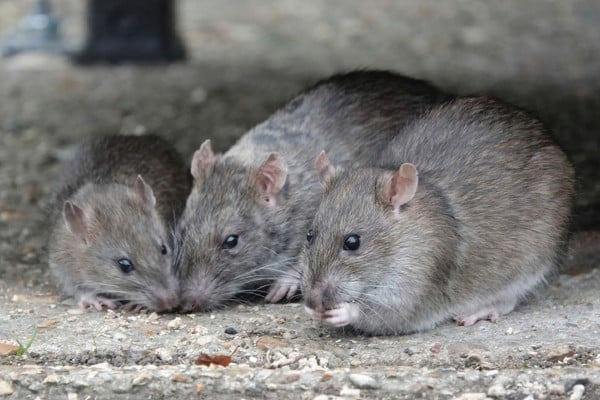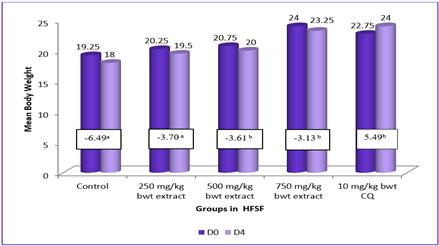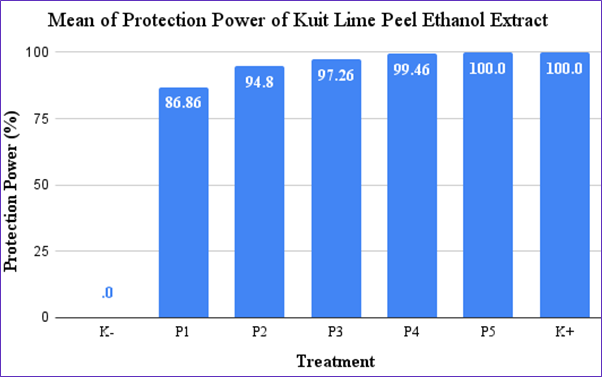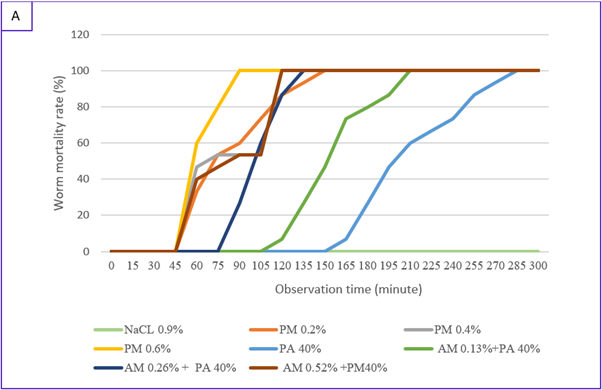Prevalence of Hymenolepis nana in wild rats in Surabaya City, East Java

Downloads
Hymenolepiasis is one of the neglected zoonotic diseases in humans, caused by the cestodes Hymenolepis nana and Hymenolepis diminuta. Its definitive hosts are rodents (mostly rats). This study aims to identify the morphology both microscopically and macroscopically. This research is a laboratory exploratory research and the sampling method uses purposive sampling technique. The samples used in this study amounted to 100 samples of wild rats that had been trapped and then necropsied, worms obtained from the digestive tract were stained with dark red stain and observed with a microscope. The results showed that microscopic morphological examination showed that the anterior part of the H. nana worm had hooks and crowns. The overall prevalence of H. nana worms was found to be 18% (18/100). The prevalence of H. nana in wild rats in Surabaya City in Rattus tanezumi was 16% (12/77). Rattus novergicus in Surabaya area with positive samples was 26% (6/23). Morphology in H. nana worms has a distinctive difference. The anterior part of H. nana has hooks that surround the rostellum, the anterior part has a ‘crown of hooks’.
Blecharz-Klin, K. et al. (2022) ‘Infection with intestinal helminth (Hymenolepis diminuta) impacts exploratory behavior and cognitive processes in rats by changing the central level of neurotransmitters’, PLoS Pathogens, 18(3), pp. 1–25. Available at: https://doi.org/10.1371/journal.ppat.1010330
Goudarzi, F. et al. (2021) ‘A systematic review and meta-analysis of Hymenolepis nana in human and rodent hosts in Iran: A remaining public health concern’, Comparative Immunology, Microbiology and Infectious Diseases, 74 (2021), p. 1-12. Available at: https://doi.org/10.1016/j.cimid.2020.101580
Habsari, A. I. and Mulyowati, T. (2020) ‘Identification of Eggs Hymenolepis Nana and Hymenolepis Diminuta in Rat Feces and Children’s Feces in Dukuh Sraten, Kecamatan Pedan, Klaten’, Journal of Health (JoH), 7(2), pp. 71–77. Available at: https://doi.org/10.30590/joh.v7i2.192
Hancke, D. and Suárez, O.V. (2017) ‘Helminth Diversity in Synanthropic Rodents from an Urban Ecosystem’, EcoHealth, 14(3), pp. 603–613. Available at: https://doi.org/10.1007/s10393-017-1239-8
Mahmoud, M.S. et al. (2011) ‘Advanced Approach in Differentiation Study in Hymenolepis nana and H. Diminuta by Scanning Electron Microscopy’, Acta Parasitologica Globalis, 2(2), pp. 34–39. Available at: https://www.researchgate.net/publication/317178651 (Accessed: December 27, 2024).
Mohd-Qawiem, F. et al. (2022) ‘Detection of zoonotic-borne parasites in Rattus spp. In Klang Valley, Malaysia’, Veterinary World, 15(4), pp. 1006–1014. Available at: https://doi.org/10.14202/vetworld.2022.1006-1014
Paramasvaran, S. et al. (2009) ‘Endo-parasite fauna of rodents caught in five wet markets in Kuala Lumpur and its potential zoonotic implications’, Tropical Biomedicine, 26(1), pp. 67–72.
Priyanto, D. et al. (2014) 'Identification of Endoparasites in Rats of Various Habitats', Health Science Indonesia. 5 (1), pp. 49-53. Available at: https://media.neliti.com/media/publications-test/62487-identification-of-endoparasites-in-rats-02075 (Accessed: April 25, 2025).
Setyaningrum, A. (2016) ‘Jenis Tikus dan Endoparasit Cacing dalam Usus Tikus di Pasar Rasamala Kelurahan Srondol Wetan Kecamatan Banyumanik Kota Semarang’, Jurnal kesehatan masyarakat, 48(3), pp. 1742–1752. Available at: http://ejournal-s1.undip.ac.id/index.php/jkm (Accessed: December 20, 2024).
Widiastuti, D. et al. (2016) ‘Infeksi Cacing Hymenolepis nana dan Hymenolepis diminuta pada Tikus Kabupaten Banyumas’, Vektora, 8(2), pp. 81–90. Available at: https://www.neliti.com/id/publications/127422/infeksi-cacing-hymenolepis-nana-dan-hymenolepis-diminuta-pada-tikus-dan-cecurut (Accessed: November 27, 2024).
Yang, D. et al. (2017) ‘Brown Rats (Rattus norvegicus) in Heilongjiang Province, China’, The Korean Journal of Parasitology, 55(3), pp. 351–355. Available at: https://doi.org/10.3347/kjp.2017.55.3.351
Younis, A. E. et al. (2021) 'A Parasitological Survey of Zoonotic Cestodes Carried by House Rat in Aswan, Egypt, Reveals Cryptic Diversity at The Molekuler Level', Veterinary World, 14 (8), pp. 2160-2169. Available at: https://www.doi.org/10.14202/vetworld.2021.2160-2169
Copyright (c) 2025 Journal of Parasite Science

This work is licensed under a Creative Commons Attribution-NonCommercial-ShareAlike 4.0 International License.
- Every manuscript submitted to must observe the policy and terms set by the Journal of Parasite Science
- Publication rights to manuscript content published by the Journal of Parasite Science is owned by the Journal of Parasite Science with the consent and approval of the author(s) concerned
- Authors and other parties are bound to the Creative Commons Attribution-NonCommercial-ShareAlike 4.0 International License for the published articles, legal formal aspect of journal publication accessibility refers to Creative Commons Attribution-NonCommercial-ShareAlike 4.0 International License (CC BY-NC-SA)
- By submitting the manuscript, the author agrees to the requirement that the copyright of the submitted article will be transferred to Journal of Parasite Science as the publisher of the journal. The intended copyright includes the right to publish articles in various forms (including reprints). journal of parasite science retains the publishing rights to published articles.
































